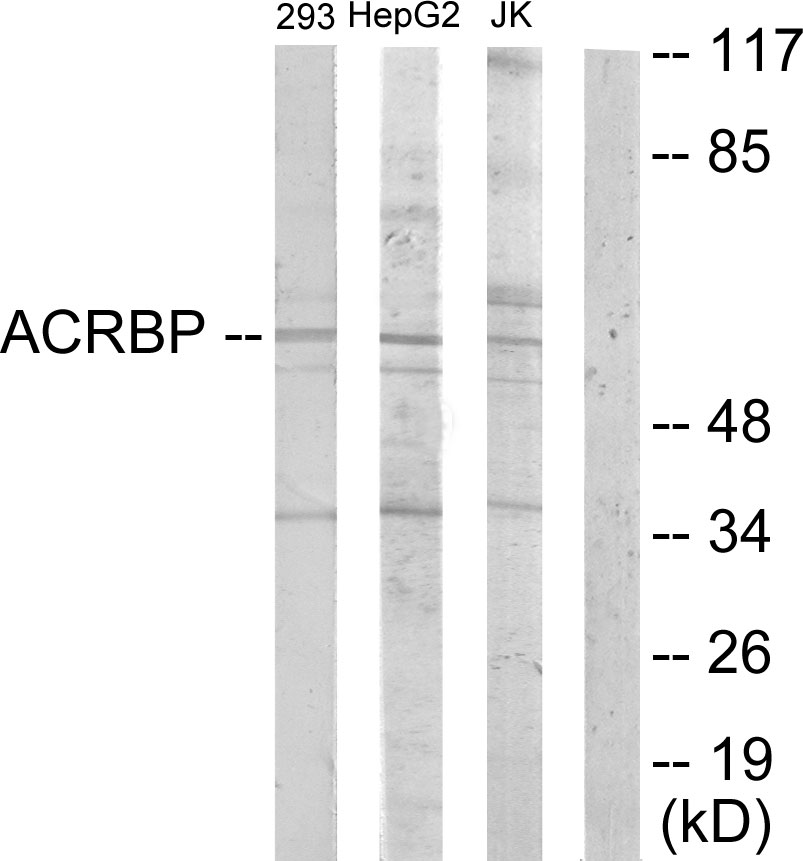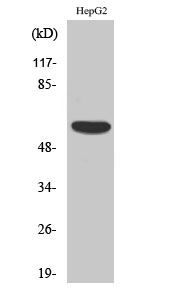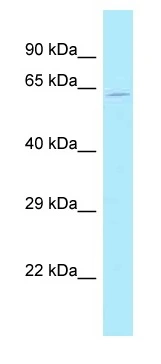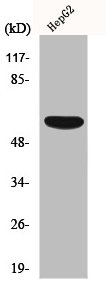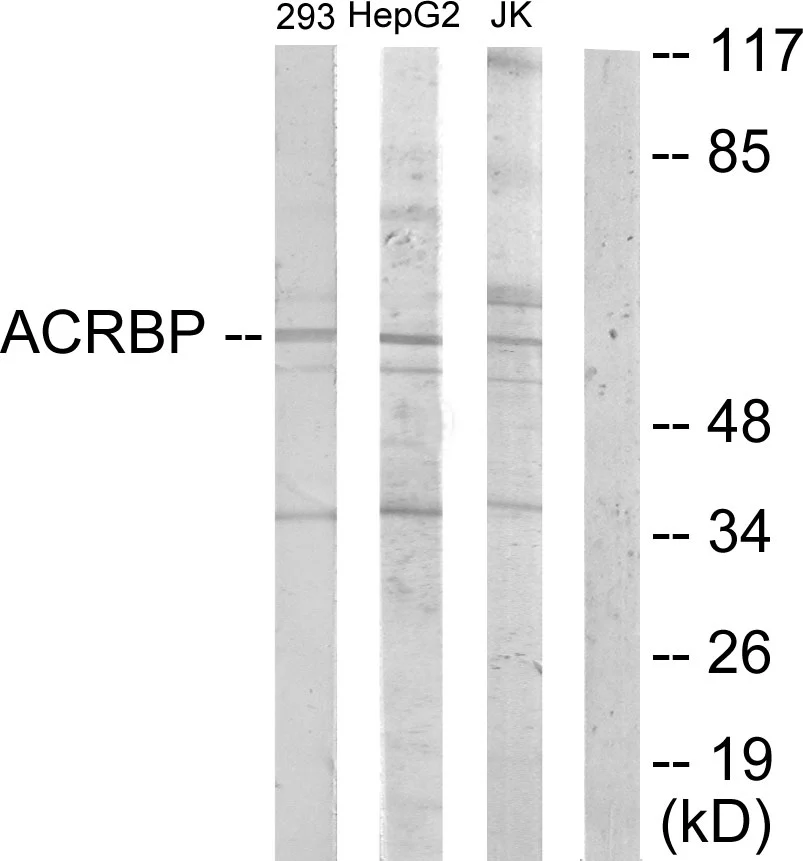
WB analysis of HepG2, Jurkat, and 293 cell lysates using GTX87784 ACRBP antibody. The lane on the right is blocked with the synthesized peptide.
ACRBP antibody
GTX87784
ApplicationsWestern Blot
Product group Antibodies
TargetACRBP
Overview
- SupplierGeneTex
- Product NameACRBP antibody
- Delivery Days Customer9
- Application Supplier NoteWB: 1:500~1:1000. *Optimal dilutions/concentrations should be determined by the researcher.Not tested in other applications.
- ApplicationsWestern Blot
- CertificationResearch Use Only
- ClonalityPolyclonal
- ConjugateUnconjugated
- Gene ID84519
- Target nameACRBP
- Target descriptionacrosin binding protein
- Target synonymsCT23, OY-TES-1, SP32, acrosin-binding protein, acrosin-binding protein, 60 kDa form, cancer/testis antigen 23, cancer/testis antigen OY-TES-1, proacrosin binding protein sp32, testicular tissue protein Li 10
- HostRabbit
- IsotypeIgG
- Protein IDQ8NEB7
- Protein NameAcrosin-binding protein
- Scientific DescriptionThe protein encoded by this gene is similar to proacrosin binding protein sp32 precursor found in mouse, guinea pig, and pig. This protein is located in the sperm acrosome and is thought to function as a binding protein to proacrosin for packaging and condensation of the acrosin zymogen in the acrosomal matrix. This protein is a member of the cancer/testis family of antigens and it is found to be immunogenic. In normal tissues, this mRNA is expressed only in testis, whereas it is detected in a range of different tumor types such as bladder, breast, lung, liver, and colon. [provided by RefSeq, Jul 2008]
- Storage Instruction-20°C or -80°C,2°C to 8°C
- UNSPSC12352203

